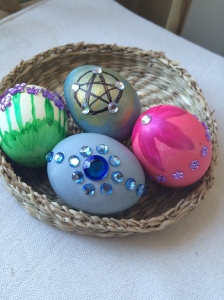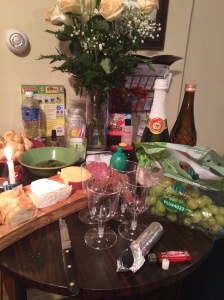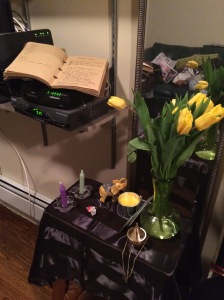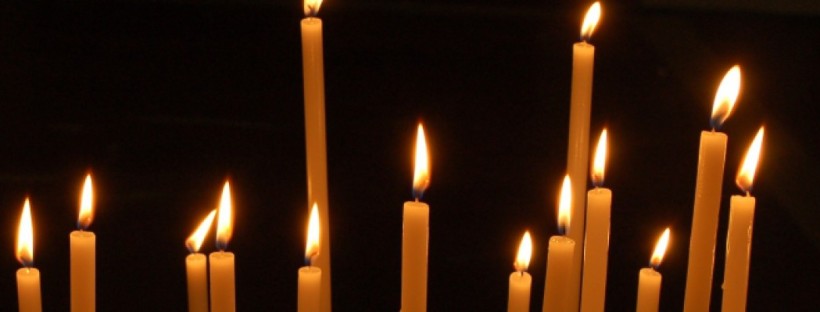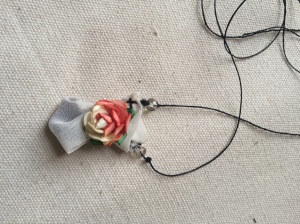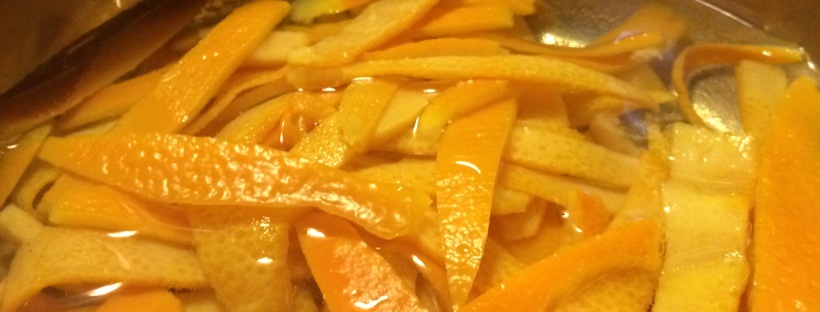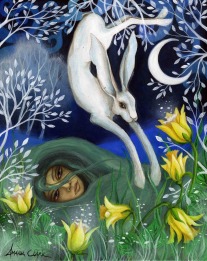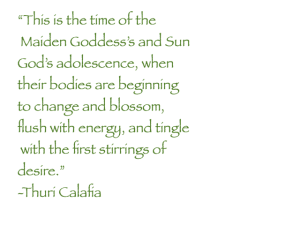
There is no doubt that Ostara resembles Easter in many ways instead of the “easter bunny” there is Ostara and the Hare. Though the real version has more sex and betrayal here is a kid friendly version that I found online:
Eostre and the Easter Bunny
Sonia Jenson
Many many years ago, during the time of dragons and castles, there was a beautiful Goddess named Eostre (pronounced Ee-ost-ray). The Goddess had long thick hair the colour of golden wheat, and her eyes were as blue as the sky above. Eostre was the Goddess of Spring, and it was her job to make sure that the Earth awakened from its winter sleep.
During Spring the world came alive. Birds would chirp from the trees as they built nests for the little eggs that would soon hatch into baby birds. Butterflies came out of their cocoons wearing wings of gorgeous colours. All the mother animals of the world gave birth to babies, and beautiful flowers opened their petals. Spring was a time of new beginnings. It was a time to celebrate.
Every year, on the first day of Spring, Eostre held a huge Spring Festival in the meadow. Animals and children from all over the world would attend and bring gifts for the Goddess of Spring to show how happy they were with the fresh new season.
One year, on the day before the festival, the hare wanted to give Eostre a gift. But the hare had nothing that would be fit for a Goddess. The hare was very poor and he had a hard enough time feeding himself, never mind giving a gift to someone.
That day while searching through the forest for some food, the hare found a fresh egg in the grass. He was very hungry and sat down to enjoy his found lunch. He was about to crack open the egg when he suddenly stopped.
“This egg would make a nice gift for Eostre,” he thought to himself. “An egg symbolizes birth and Spring. Yes, a very nice gift indeed.” So the hare hopped home to decorate the egg.
The next day the hare went to the meadow and hopped up to the Goddess. He shyly presented her with his gift. Eostre took one look at the egg and gave the hare a huge smile. It was a beautiful egg. The hare had painted the egg with lovely designs coloured from the dyes of roses, buttercups and other plants. He had then sealed the egg with beeswax so that it would be shiny.
The Goddess was so happy with the gift that she wanted everyone to have one and share her joy. Eostre knew that the hare was very poor and to give her the egg was a very unselfish act. He could have eaten it and had his belly filled. Eostre decided to reward the hare.
That day, the Goddess of Spring told the hare that he could come and live in her castle. He would have only one job, and that would be to deliver a decorated egg to children around the world, for Eostre loved children. Children symbolized birth and innocence. The eggs would be delivered on the eve of the Spring Festival, so that the children would wake up and find them in the morning.
And so every year, Eostre’s bunny (for a hare is a type of rabbit) and his descendants would deliver eggs to the children. Today we call the hare the Easter Bunny, because the Sunday after the first full moon of the Spring Equinox is Easter Sunday, a Christian celebration. Besides, Easter egg is a lot easier to say than Eostre egg.
The end
